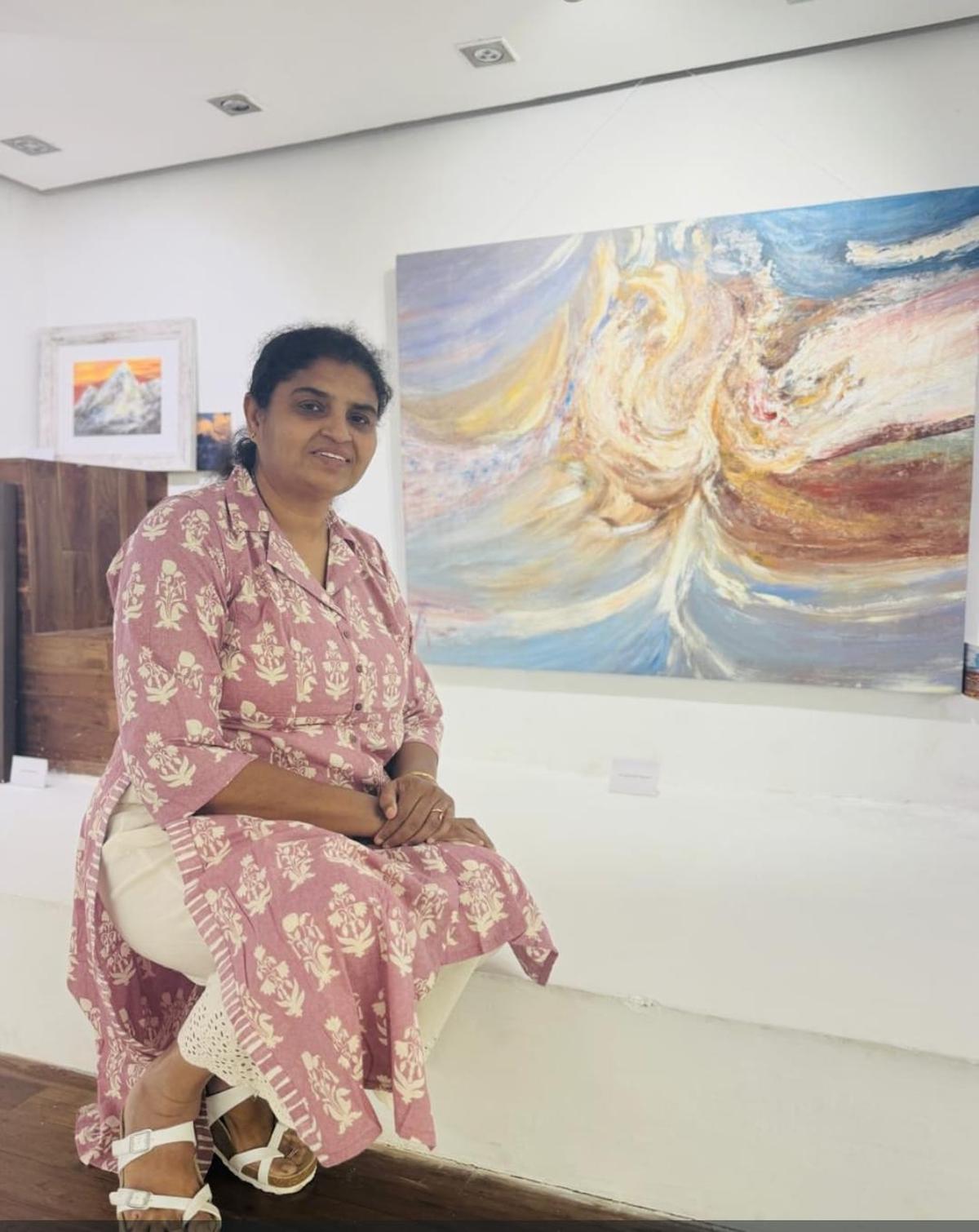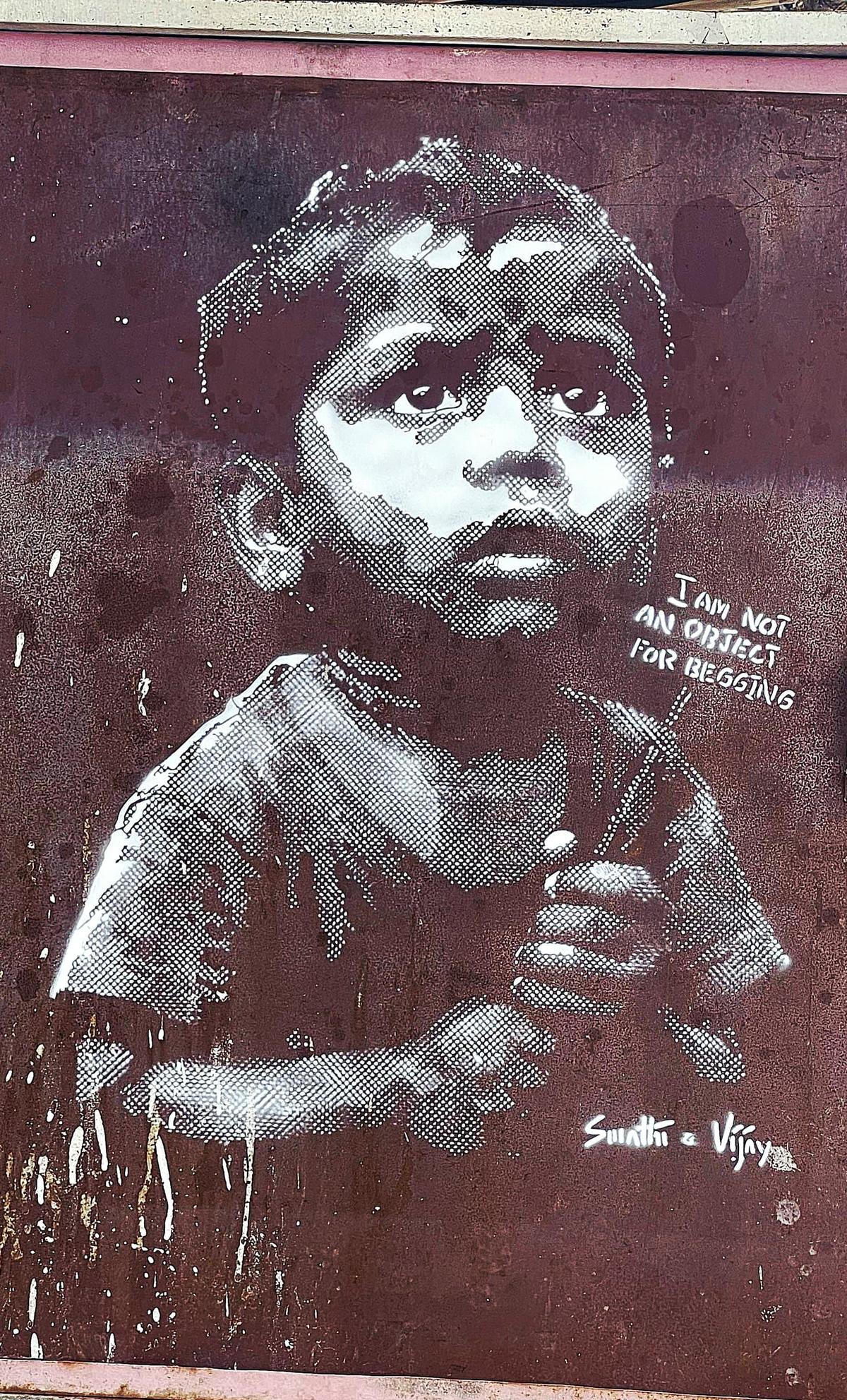Public Art on Shaikpet Flyover in Hyderabad | Photo Credit: Siddhant Thakur
Busy junctions, bridges, quiet neighbourhoods and flyover walls across Hyderabad are turning into canvases for public art. From murals inspired by Nature and education to portraits of sports icons, everyday heroes and the city’s historic landmarks, there’s plenty to take in. These open-air galleries brighten up the urban landscape and bring art closer to the public. But not everyone is convinced — some feel the murals are more decorative than meaningful. It is all part of the Greater Hyderabad Municipal Corporation’s (GHMC) ongoing beautification drive.
City-based artist and curator Aman preet kaur raises a pertinent question: Is public art in Hyderabad losing its direction? “Each piece of public art is a chance to connect with the community. But this potential often goes untapped,” she says.
At Jubilee Hills flyover in Hyderabad
| Photo Credit:
Siddhant Thakur
Take the murals along Road No. 45, Jubilee Hills — large depictions of a monkey, frog, hen and deer. For Aman, these feel random. “What’s the idea behind these animals staring from the pillars? In contrast, look at the Masab Tank flyover. It features tile murals of the Charminar, unique rocks of the city and HITEC City showcasing a blend of tradition and modernity. These offer context, relevance, and a bit of local history. Even a visitor can get a sense of Hyderabad’s heritage.”

Of care and maintenance
As the GHMC continues to spruce up the city with mural art, one cannot help but wonder about its long-term sustainability. Can this wave of beautification hold up without proper care and maintenance?
Take for instance the batik art created by artist Yasala Balaiah, son of the late, reputed batik artist of the same name, for the World Telugu Conference in 2017. The dull walls near Ravindra Bharathi, opposite the Assembly, were once brought to life with 25 vibrant murals celebrating Telangana’s culture and everyday life. Seven years on, the picture has changed. Harsh summers and the elements have taken their toll; the colours are faded, and the murals have lost their charm.
Who is responsible for upkeep? Will GHMC step in, or should the company that executed the project be held accountable?

Senior artist and Iconart Gallery founder Avani Rao Gandra shares a similar view. She points to sculptures like The Thinker near Narsingi Circle, metal works in the Gachibowli traffic islands, and the stylised animals near IKEA. While they enhance the visual experience, she feels they miss a larger opportunity. “Art that reflects Telangana’s heritage like Nakashi, Kondapalli, or Bidri placed near cultural hubs, or contemporary pieces that echo the spirit of a fast-changing city, could help turn Hyderabad into a city that tells its own story,” she says. “What we need is a thoughtful mix of the historical and the present.”

Iconart Gallery founder Avani Rao Gandra
| Photo Credit:
Special Arrangement
Over the years, public art has steadily grown across the city. Steel sculptures and metal installations at traffic junctions have become more common but few carry any form of credit. “These works would have more impact if they were site-specific or interactive,” adds Aman Preet.
Floating Rock Structure at Moazzam Jahi Market | Photo Credit: Siddhant Thakur
She also points to Floating Rocks, installed at Moazzam Jahi Market four years ago — a replica of a piece by the late Egyptian sculptor Smaban Abbas: “There’s no mention of the original artist. If we can’t create something new, at least we should acknowledge the source.”
Artist duo Swathi and Vijay have been using street art to spotlight social issues for over a decade in Hyderabad, Vijayawada and Visakhapatnam. Their recent work in Tellapur addresses child begging and exploitation. For Swathi, originality is key: “Authentic work gets noticed, whether it’s on a main road or a backstreet. Even a simple flower rendered in an artist’s unique style feels more compelling than something lifted from Pinterest.”

Street art by Swathi Vijay on child begging and exploitation
| Photo Credit:
Special Arrangement
Credit remains a tricky issue, especially for murals where several artists work together. But for sculptures and installations, Aman Preet believes tagging is possible and necessary. “Every public artwork, even if it’s a replica, deserves a label, naming the artist and offering some context. It builds awareness and creates a space for deeper engagement,” she says. “We could begin with the striking stone sculptures displayed along Raj Bhavan Road from the international sculpture symposium.”
Published – July 30, 2025 01:35 PM is








